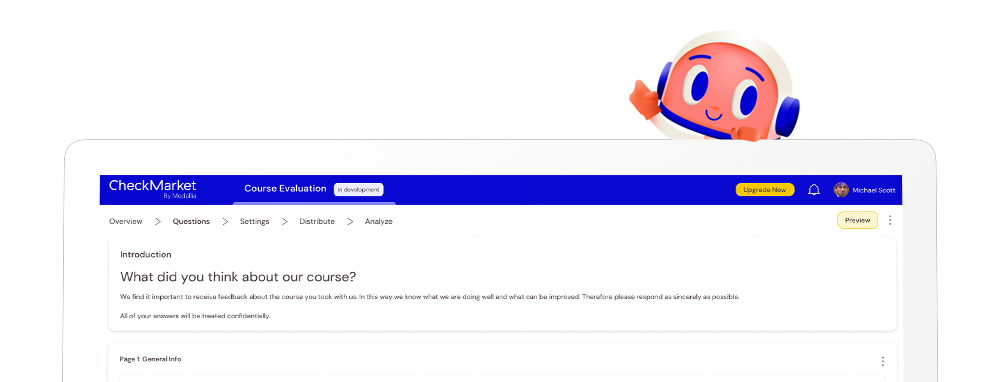Act quickly using survey notifications
Identify important response patterns and receive automatic, real-time push notifications that help you act. It’s easy: Listen. Act. Win!
Get started for free
If customers are unsatisfied, this can damage your reputation dramatically. Imagine an angry post on social media read by thousands of people. Take action before this happens!
Automated alerts give you the opportunity to quickly interact with your respondents. Alerts, used correctly, can win back at-risk customers. They allow you to communicate with dissatisfied customers to learn and repair damaged relationships through coordinated follow-up.
How it works…
Set conditions based on how respondents answer surveys.
When these conditions are met, they trigger actions such as sending an email, a text message, a Zendesk ticket, a message in Slack or making an API call.
For example, identify disappointed customers automatically based on a satisfaction question and push an email alert or text message to their account manager for immediate follow-up.
- React fast
- Win back at-risk customers
- Automate a coordinated follow-up
- Create a conversation
Which actions can I set up?

Send an email to one or more recipients. This mail contains all the information the recipient needs to handle the alert. It contains a link to the real-time respondent report which includes all respondents answers, contact fields, location, etc.
Salesforce integration lets you transfer leads seamlessly. You can create leads based on events that happen in a survey. These leads can be assigned based on salesforce.com lead assignment rules. For instance, use a CheckMarket survey as an embedded form on your website. When someone fills in the form a lead will be created in Salesforce.
Zendesk integration lets you automatically create a ticket in the popular web-based helpdesk. For instance, you could ask a respondent in a survey if they would like to be contacted and if so have a ticket created in Zendesk so that your customer support staff can contact them.
Send a message directly through Slack reaching specific members of a team or an entire department at once. It contains all the information the recipient needs to handle the alert. It contains a link to the real-time respondent report which includes all respondents answers, contact fields, location, etc.

Send an HTTP-request. These requests are very powerful, because they allow to interact with other systems and APIs. For instance, you could create a support ticket in your helpdesk application, based on answers given by a respondent. You could also use our API to send the respondent a follow-up survey automatically if they answer a certain way.

Using our ‘Create contact’ notification you can completely automate your workflow and create a new contact – as well as add it to a follow-up survey – each time a certain response was provided. The follow-up team immediately receives an invitation to fill out the follow-up survey as soon as someone had been identified as unsatisfied.

Using our Twitter integration you can send a direct message (DM) automatically. Choose which info should be in the alert based on variables and receive the URL to check the respondent report. That way you can follow up an unsatisfied customer easily.

Optimize notifications with Variables
One of the real powers of our alerts is the use of variables. You can add all kinds of information such as contact and demographic fields from the address book and answers from the survey.
You can even use the variables in the subject and email address. For instance, if an optional field holds the email address of the respondent’s account manager, you add that variable to the “To” field, so that the correct account manager receives the mail. All the variables are also available in the Twitter direct message and HTTP request alerts.


